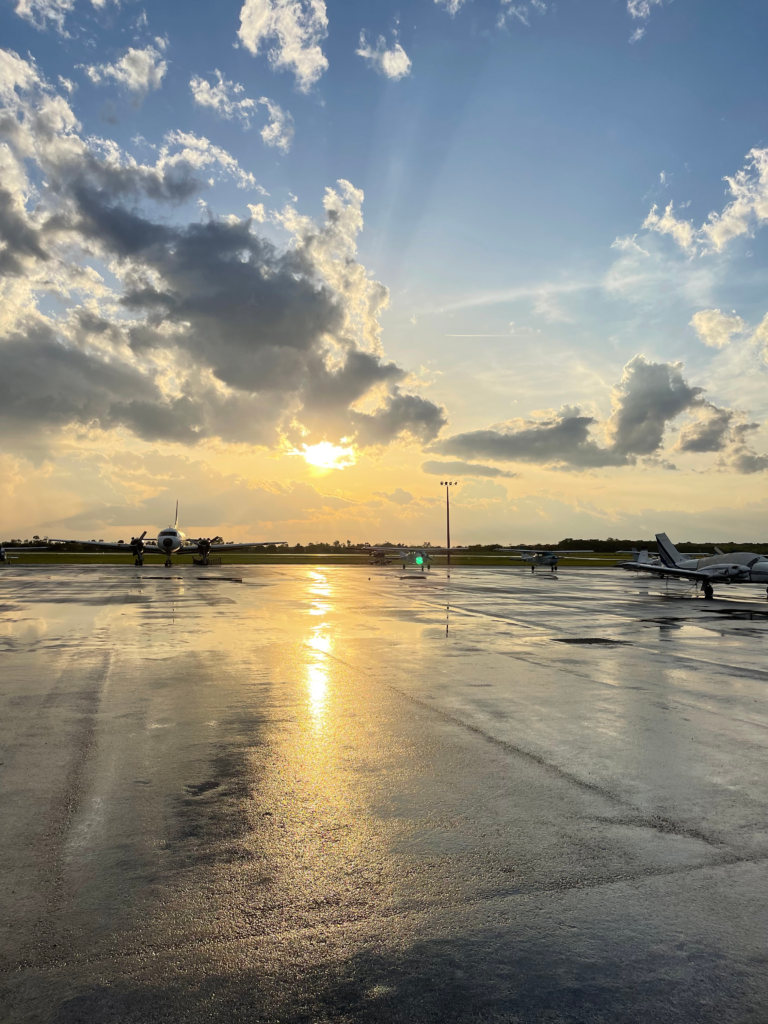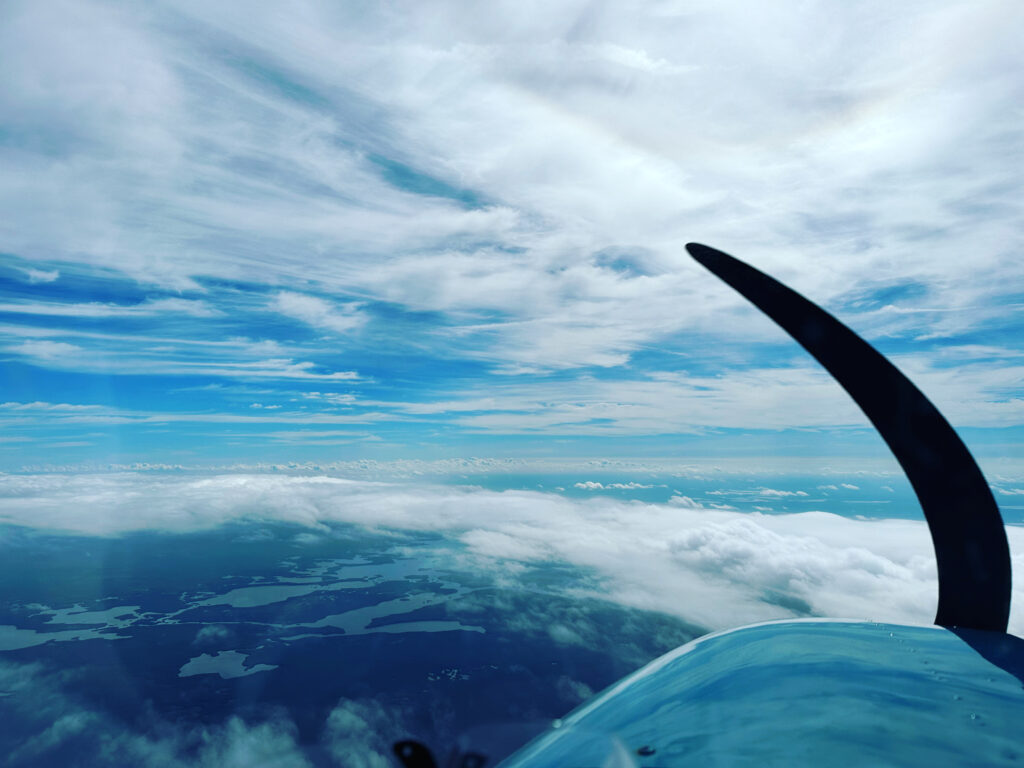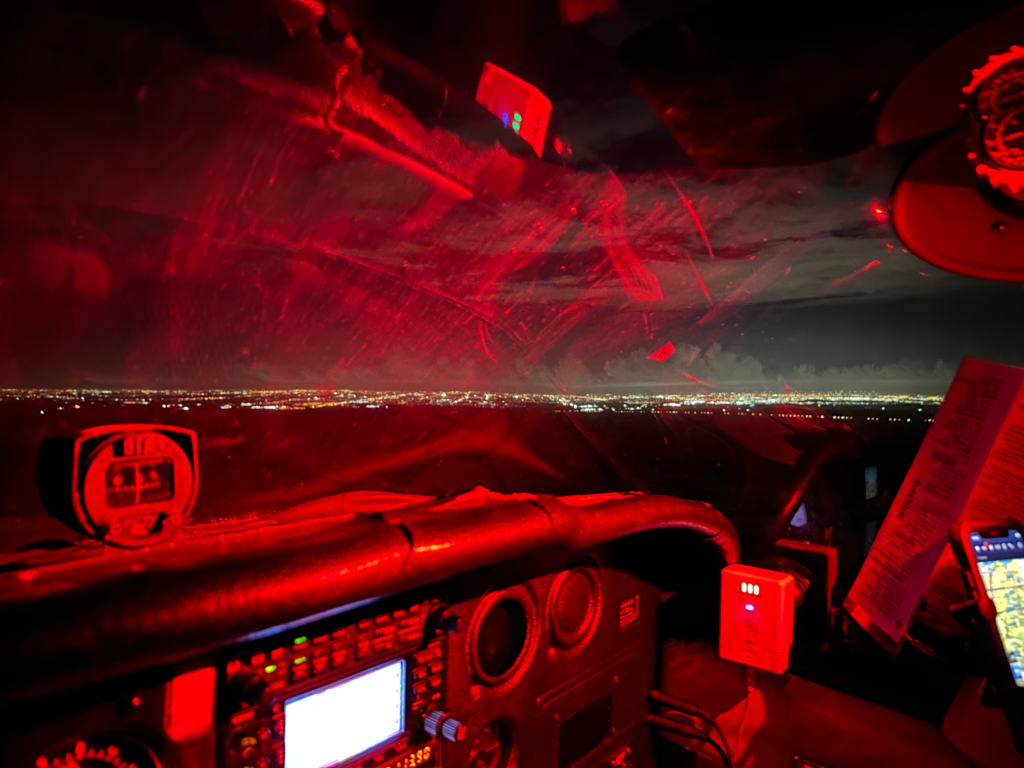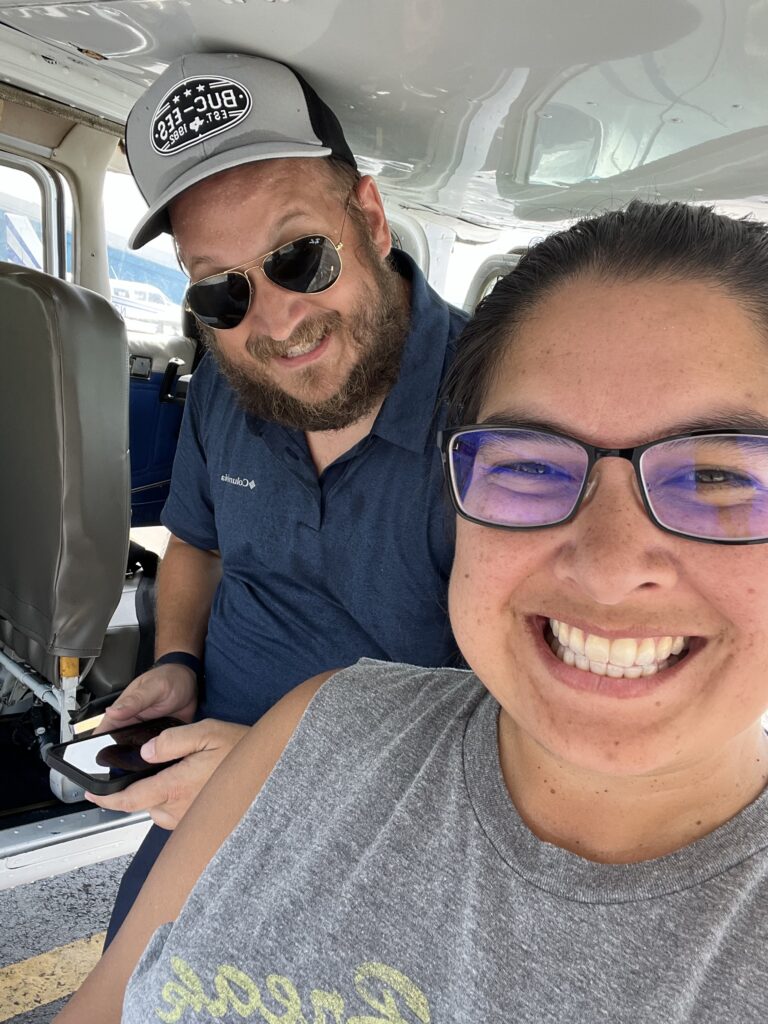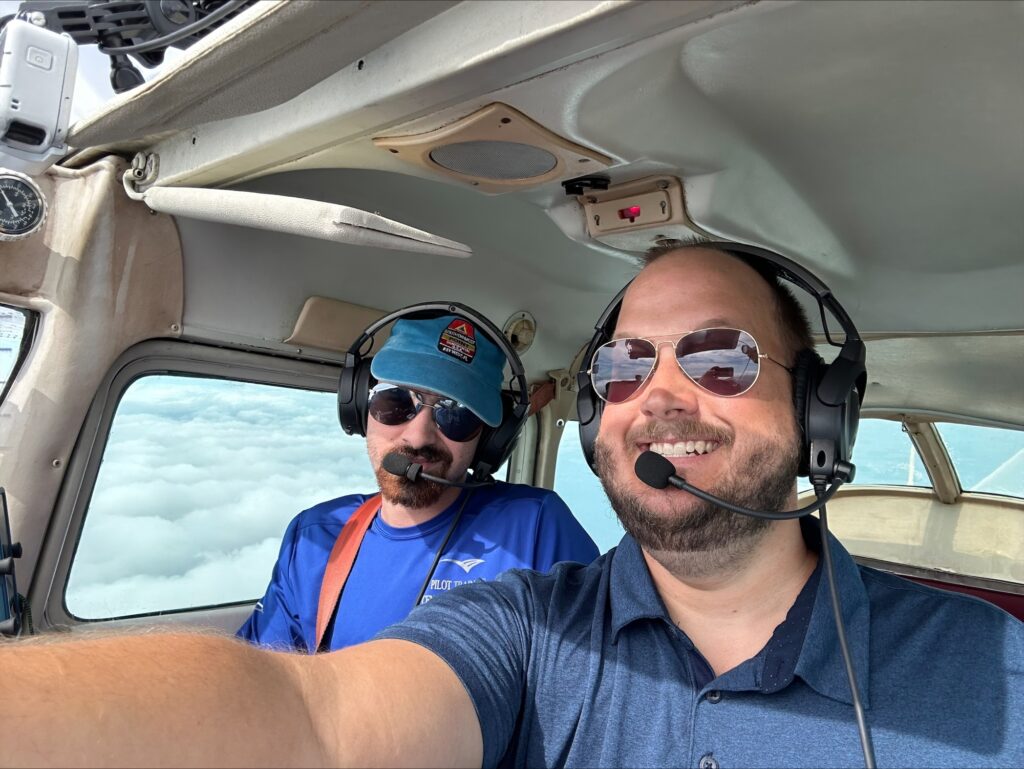Just passed 80 hours in the Cessna 172, and my PPL checkride is imminent. I’ll have a full debrief on my checkride when I pass. We are in exciting times!
In my research to prepare for my checkride, setting personal minimums is a common feature in things to have. I’ve found the FAA version (https://www.faa.gov/sites/faa.gov/files/2022-01/Personal%20Minimums.pdf) and the AOPA (https://www.aopa.org/-/media/Files/AOPA/Home/Pilot-Resources/Personal-Mins-Contracts/Personal-Minimums-Contract-VFR.pdf). I’ll probably make my own soon, since these look to be formatted for a single flight as opposed to the reference sheet I was hoping for.
I’d like a sheet that I’ve created that I refer to prior to a flight based on Go/No Go decisions I’ve made in past and what I’ve found to be comfortable, and uncomfortable with.
Lessons already learned
The first thing I’ve found… I need to start keeping track of uncomfortable situations and what the conditions were like. I need to avoid survivor-biased memories, and remember the bad ones.
Here is an example. My instructor and I had a cross country scheduled for the afternoon of some day. We were supposed to get the plane at 4PM, and since this was late Florida summers, sunset would be sometime after 8PM. As luck would have it, a plane went in for unscheduled maintenance, and then there was a SNAFU with scheduling where the crew member that modified the plane schedules to overcome the maintenance plane only put us down for 6PM-8PM slot. The plane was immediately booked for someone looking to replace their displaced timeslot.
Making matters worse, that plane then had an unscheduled maintenance issue.
We attempted to start our cross country at approximately 7PM. We’d be coming home after dark, but both my instructor and I were current for night flights, and this seemed like a non-issue.
That is until the Florida weather found us and it poured rain for 30 minutes. Our actual departure time ended up being around 8PM, and it was getting dark. Finally hitting the runway, we were ready to go and began our takeoff roll. At 55 knots we rotated off the runway… and straight into the next issue. The airspeed indicator pined at 60 knots and didn’t bounce, budge, or climb. Recognizing the issue at about 100 feet off the ground, it was safer to climb up and attempt some troubleshooting instead of trying to abort the flight with the remaining runway, now in the dark. At about 400 feet, we noticed a discrepancy with the Altitude Indicator and rate of climb instruments. We now knew we had water blocking something in our pitot static system. We pulled the alternate static port, which resolved all the issues. Both the instructor and myself were now done with the day at this point. We went home.
What I should have done was wrote down the weather reports for this flight. I’d save them to my personal minimums, as a new pilot, to remind myself when things look like this, you may not want to go.
I’ll keep better track now.
Setting my minimums
It’s time to put something on paper. My plan is to flip through my logbook as well as my pictures on my iPhone to remind myself about weather encounters and what my thoughts were at the time. I’m setting minimums for Pilot in Command (PIC) flights I will accomplish in the future. While I will have in mind personal minimums for future instruction flights, these are the better flights to stretch my minimums, while also staying within my instructors. I’ve had a couple flights were weather was interesting, but only 2 that I became uncomfortable at some point. I’ll need to address the uncomfortableness, sure, but I need to keep in mind that just because I felt comfortable does not mean the weather was safe for PIC time.
First thing on the question list, weather. When I first set out to lay down personal minimums, I thought they’d all be weather. While weather plays a major factor in these minimums, there is more to it than that. I’ll explain in a second.
Winds
Lets discuss winds. I’ve flown in 25 knot winds with somewhere around 35 knot gusts. This was a local training flight, and the wind direction was straight from the north at 360. We have a runway 36, which means 0 cross wind. Recalling this flight, I was comfortable and not concerned. However, should I be doing that while I’m alone or with my wife in the right seat instead of my instructor. Probably not.
Days of >10 knot winds, the plane can really get moving as it climbs out of the surrounding structures and trees from the airport. The wind spoils coming from these structures can make the flight, for a short time, very bouncy. But on decent for landing, you spend a lot more time in this zone of turbulence, and while its safe and I’ve practiced landing in these conditions a lot… maybe I should hold off on attempting worse by myself. You also have to consider where these winds are coming from. There is a school rule on solo flight that limits students to a 15 knot wind +5 for gusts, and no more that a 5 knot crosswind component. While I boost my time here, these sound like good numbers to me.
Max wind velocity and gusts: 15 knots Gusts 20 knots
Max crosswind: 5 knots
Clouds
Moving on, clouds. Visibility as a VFR pilot is important. It’s in the name: Visual Flight Rules. As a VFR pilot, I am not allowed to not see. There is a whole legal table that lays out my visibility requirements to fly… and the FAA has made it a little complicated. I won’t reproduce it here, but here they have: https://www.faasafety.gov/files/gslac/courses/content/25/185/vfr%20weather%20minimums.pdf.
Now, I have a pretty good idea of comfortable and what is not. I know my minimum altitude, for the most part, is 1500 feet. I’d like to put myself around 1000 feet above that, as radio reception is significantly better in the middle of the Everglades when you are higher, so my personal minimum altitude is easily 2500 feet. I need a buffer to the clouds. Legally, I only need 500 feet below the clouds, but small Cessna’s can rise and fall with the wind currents easily. So, as not to upset the powers that be, I’ll throw an extra 500 feet below the clouds, giving my 1000 feet. This puts my minimum ceiling (broken or overcast) at 3500 feet. This comes with a disclaimer: I’m doing these for local flights. A cross country, I will say 5000 feet along the route, as the clouds could fall lower while I’m in route.
At night, at this time, I don’t think I’ll fly overcast sky’s at night. Getting away from the city lights, its way too easy to have no visual reference to the cloud bases. Also, at night the temperatures fall, which lowers the cloud bases as well. For now, no broken or overcast sky’s at night. I’m sure I’ll update the night minimum soon.
Minimum visibility also is easy for me. I’ve seen the 3 mile visibility days, and that’s pretty bad. 5 miles is interesting, but not scary. I’m happy with 5 mile visibility. 5 miles during the day it is.
At night, again I go back to the overcast sky situation. If the weather isn’t declaring >10, I’m not going at this time.
Minimum Ceiling Day/Night: 3500ft / No Ceiling
Minimum Visibility Day/Night: 5NM / >10NM
Pilot
I didn’t think of this as a personal minimum until I looked at the templates. What about me?
There is a lot to answer here. How am I feeling? I get headaches from allergies, so how is that going? What about what I ate? How’s my stomach? When did I last drink? Did I drink water? Am I stressed today? These questions don’t have genuinely laid out answers. Based on my research, I believe these should be scaled answers, and there should be minimum Go/No Go scores for each, as well as a total minimum. At first, this will be a shot in the dark. I’ll need to revisit this often as I learn.
- How am I overall? (minimum 3)
- When did I last drink, and how am I affected? (legal minimum 8 hours, my affected rating needs to be 4 or higher)
- How is my head/sinuses? (minimum 3)
- How is my stomach, including hunger? (minimum 3 for <2 hour flights, 4 or greater for >2 hour flights)
- Rate the last 24 hours of water intake. (minimum 3)
- Have I taken any medications with an effect on todays flight? What is the risk for those medications? (Probably 2 questions here. Any medication with an effect on the flight should be a No Go. Any medication with a risk factor that’s assessable should be a No Go. More below)
- Rate my stress level. (minimum 3. more below)
- Overall score (Minimum 25 total)
Medications
I don’t like to medicate anything. That said, I do know some medications have an effect that is not good for flying, and some medications are used to treat symptoms that are not good for flying. A medication like Advil is probably not going to have much of an effect on my flight, but the conditions I treat with Advil, headaches, muscle aches, etc. probably will. So Advil would rate low on a risk factor, but that flight has a high potential of a No Go when I ask myself question 3.
Now if its hard narcotics… just kidding. Obviously prescribed pain killers are a No Go, and I don’t take unprescribed medications. Hello Mr. or Mrs. FAA person. 🙂
Stress
Ah, we all have it. If you breathe, you have stress. Babies have it, and that’s saying something.
I manage my stress very well. I can get anxious, but this doesn’t normally stress me. I say normally because eventually it all becomes stress.
And then, at least for myself, there are different kinds of stress. There are kinds of stress that going for a short flight can help. But then there is stress that makes going for a flight risky. I’m going to have to make that line between the two more black and white as experience builds. For now, my take on stress is this. If the stress of the day leads to a different state of mind or emotion than normal, I will avoid flying. If the stress of the day does not effect my state of mind or emotion, going for a flight may help reduce my stress levels.
Lets not forget that flying itself can induce stress. If I find this kind of stress building, I must take care to not let it effect my ability to make good decisions, such as No Go decisions when I’m on a schedule.
Thinking out loud here, printing my personal minimums will help in those times, because if a violation of my minimums occurs, that is going to be strong enough reason to not go.
Training
Verifying I’m legal to fly on my training is important. Ensuring I’m current on my training for my personal minimums is importanter (pilot spelling).
I’ve really only done training, so I’ll need to lay these out as time goes. I can also use experience as a metric in lieu of training. This will need to be updated.
Aircraft Minimums
Aircraft equipment
Now this is important. There is equipment I legal need, and there is equipment that I’ll become accustom to flying with. What equipment is needed for me to actually be safe, not legal?
I’ve flown mostly with GPS. So, if I’m going somewhere unfamiliar, a GPS is probably a must. And since it is a must, I’ll need 2.
I’m not familiar with any autopilots, so I’ll add I won’t use those until I get trained with them.
I could navigate in South and Central Florida with a compass and VOR. So, in my home territory, I can put these in as minimums if GPS isn’t available.
Don’t forget a chart.
Do I feel comfortable flying without a fire extinguisher? During training, yes. With my family, no.
Is the flight over water, and how do I feel about everyone onboards water survival abilities? Make sure I have equipment to overcome this.
Aircraft fuel
There is legal minimum fuel: 30 minutes by day, 45 minutes by night. Then there is my minimum fuel. For the foreseeable future, I will be ensuring there is at least 1.5 hours of fuel in the tanks.
Aircraft faults
What aircraft faults am I OK with flying through? Which am I not? This list will grow with experience. I am listing what “not necessary for legal requirements” equipment I will terminate a flight for.
It’s also worth noting that if I’m near congested airspace, the equipment fault list that requires terminating a flight will be longer.
Aircraft performance
My experience at the moment will not result in a list for this. But, I intend to go get mountain flying training, and I’ll probably have some after that.
Airports
Ah, finally something that changes per flight. The airports. Homestead General (X51) has a 3000′ and 4000′ runway. How do I feel about shorter runways? I actually do feel I could land at George T Lewis Cedar Key, FL (KCDK) which is 2302′, but I should probably only do it with another certificated pilot or instructor in the right seat.
I should also ask about runway condition. I know Cessna 172’s can land just about anywhere, but am I confident my skill level can? The answer for now is No, until after I’ve done a grass field landing with an instructor.

